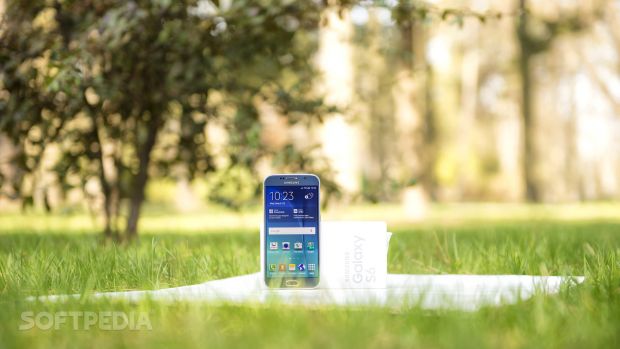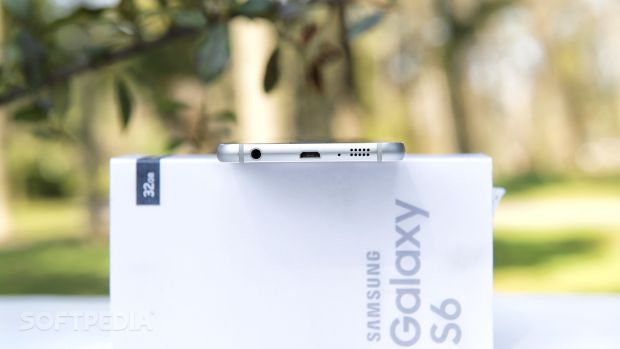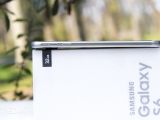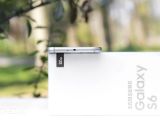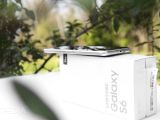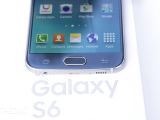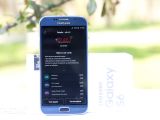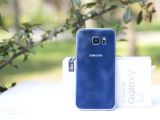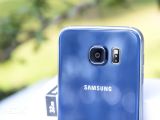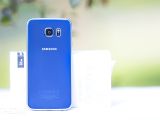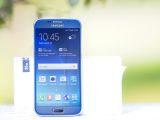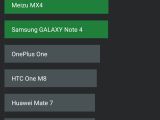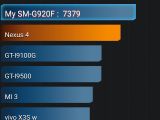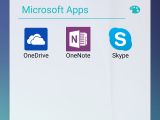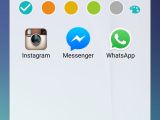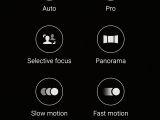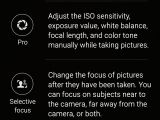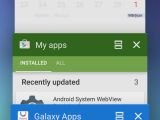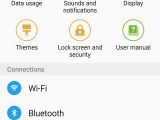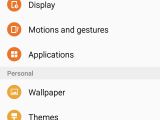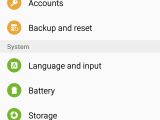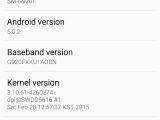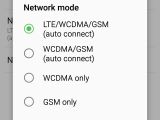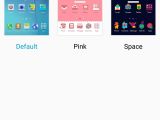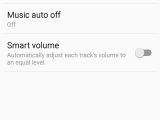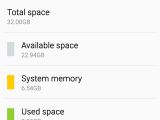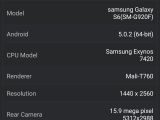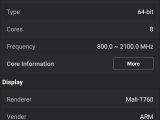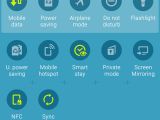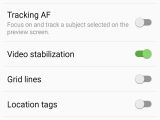Samsung has learned its lesson and understood that launching a cheap-looking smartphone just won't cut it anymore. Plastic-made handsets should not be among any company's flagship smartphones, and Samsung was one of the few that still made Galaxy S phones of cheap plastic.
But not anymore. The best word that could describe the Galaxy S6 is “different,” because Samsung's flagship doesn't look like any of the company's previous smartphones.
However, that doesn't mean Samsung has found a unique design that would differentiate its flagship smartphones, on the contrary. The South Korean company has borrowed some design traits from the Apple's iPhone, and that's pretty obvious from certain angles.
But that's not the point, the point is Samsung finally understood that it's not OK to sell a cheap-looking smartphone at the price of a flagship device, even though the specs recommend it.
The Galaxy S6 is different, but if it looks too standard for you, Samsung has also launched the Galaxy S6 Edge, which is a bit more expensive but comes with a dual-sided display.
The looks
Looking at Samsung Galaxy S6 from the front will make you think this is a slightly different version of the Galaxy S5. The smartphones look strikingly similar from the front, but that immediately changes if you turn the Galaxy S6 around.
Ironically, it's the back side that makes the Galaxy S6 look like a premium smartphone and the slim frame. Both front and back sides of the phone are covered with Corning Gorilla Glass 4, which is how Samsung managed to give the Galaxy S6 a more stylish feel.
The brushed metal frame with rounded corners is clearly taken from the Samsung Galaxy Alpha, but the top and bottom sides strongly resemble the iPhone 6.
Glass is much better than plastic, but it has its downsides as well. Even though the Galaxy S6 now slips easier in your pocket, it slides very easily on plastic surfaces.
However, the overall feeling is beyond these small downsides and Samsung's flagship really looks and feels like a premium smartphone for the first time in years.
Samsung Galaxy S6 is only 6.8mm thin, which makes so much slimmer than Galaxy S5 (8.1mm). Although Samsung managed to trim down the body of the Galaxy S6 so much, the camera hump on the back was to be expected.
Still, it's not something to worry about since the protruding camera won't be such a nuisance in the grand scheme of things.
Moving on to outside ports, Samsung has replaced the microUSB 3.0 in the Galaxy S5 with a microUSB 2.0, which is placed at the bottom along with 3.5mm audio jack and the loudspeaker.On top, there's only the IR blaster and a secondary microphone. The first one is on the bottom along with the loudspeaker and 3.5mm audio jack.
The left side of the phone features the dual volume keys while on the right side there's the power on/off button and the nanoSIM tray.
Samsung has kept the physical Home button right below the display, as well as the Task Switcher and Back touch-sensitive keys. Above the display, there are a couple of sensors and the 5-megapixel camera, as well as the earpiece.
The Galaxy S6's design is a breath of fresh air for Samsung's flagship lineup, and even if it's not without its faults, it surely is a huge step in the right direction.
Display and camera may be the best on the market
For quite a while, Samsung has been making some of the best mobile displays available on the market, but this is no wonder since the South Korean company has a dedicated subsidiary that delivers mobile displays to many other brands as well.
The Galaxy S5 and Galaxy Note 4 both have great displays, but Samsung has taken it even further with the Galaxy S6.
Samsung's latest flagship is packed with a 5.1-inch Super AMOLED capacitive touchscreen display that supports Quad HD (2560 x 1440 pixels) resolution and features 577ppi (pixel per inch). On top of that, it's protected by Corning Gorilla Glass 4.
I believe Samsung Galaxy S6's display has no rivals on the market yet. The mind-blowing 577ppi is now complemented by diamond-shaped PenTile matrix, which is supposed to make it more power efficient and long lasting than any other display on the market.
Forget about any bad thing you might have heard about Super AMOLED displays because it doesn't apply to Samsung Galaxy S6' screen. The colors are bright and vivid without being oversaturated.
Viewing angles and the low reflectivity makes the Galaxy S6 display the perfect choice for those who often use their smartphone outdoors in bright light. Everything is perfectly visible thanks to an almost infinite contrast ratio and high brightness.
Speaking of brightness, I've noticed that if you decided to set the brightness of the display manually, it wouldn't go higher than the Auto Brightness settings. Basically, if you want maximum brightness, you should go for the Auto Brightness instead of choosing to set it manually.
Moving on to the camera, I'm afraid I only have good words for what Samsung did with the 16-megapixel photo snapper on the back. I'm not a Samsung fanboy, and while covering the display and design parts of the Galaxy S6, I've been impressed by this smartphone.
Now I'm impressed with Samsung's achievements when it comes to camera quality. I've used quite a lot of smartphones for taking pictures, but Galaxy S6 is the fastest I've tried.
I believe it takes less than a second for Galaxy S6's camera to take a picture and process it, which is quite impressive for a 16-megapixel camera.
The raw numbers indicate that you can take pictures with maximum resolution of 2988 x 5312 pixels. It's also worth mentioning that Galaxy S6's 16-megapixel camera uses a Sony IMX240 sensor with an f/1.9 aperture, which makes pictures look brighter.
It is not the same lens included in the Galaxy Note 4, and the results are visible when comparing photos made with both smartphones.Pictures taken with Samsung Galaxy S6 have a higher detail level and less noisy that Galaxy Note 4's. That's also because Samsung also fine-tuned the processing software to provide much better results and way faster.
The camera UI is pretty complex too, but you will find explanations for each settings or function available that will help you capture the perfect picture. A nice, useful feature is how you can quickly open the camera app by double tapping the Home button.
But Galaxy S6's camera not only captures great pictures, but it can also record amazing videos. Even though you can shoot 4K videos with the 16-megapixel camera, you won't be able to take advantage of nifty features like HDR and video stabilization.
The same goes for videos captured in full HD (1080p) at 60fps. We've tested the Galaxy S6's video capabilities in both 4K (below) and 1080p@30fps modes and found that the latter is more adequate if you don't want your videos to be affected by shakiness.
Last but not least, Samsung added a 5-megapixel front-facing camera so you can enjoy better selfies taken with the Galaxy S6. It can also record 1440p@30fps videos and users can take advantage of the Wide selfie feature.
Galaxy S6 has no rivals when it comes to power and performance
There has been lots of talk about Samsung's decision to drop Qualcomm's Snapdragon 810 chipset in favor of one of its own. The reasons are not really important, though just by looking at benchmark results we can definitely say the South Korean company took the right decision.
At the core of Galaxy S6's high performance stays Samsung's Exynos 7420 chipset that accommodates two quad-core processors: 1.5GHz Cortex A15 and 2.1GHz Cortex-A57.
The phone's 64-bit octa-core CPU is complemented by a Mali-T760MP8 graphics processing unit and 3GB of RAM. Exynos 7420 is the first and only mobile chipset built on a 14nm manufacturing process, which makes it faster and more power efficient.
Performance-wise, I believe Samsung Galaxy S6 is the fastest Android smartphone available in the market. I haven't encountered any lags and browsing through the phone's menus is quite snappy.
I don't think Google managed to improve Android to the point of removing the lags present in so many smartphones. Instead, I believe Samsung has put such a powerful processor inside the Galaxy S6 that it removes these lags that many have been complaining for quite a while.
So, it's brute hardware force against software optimization finesse. Either way, I believe it's in users’ interest to get a smooth Android experience on the Galaxy S6.
Samsung Galaxy S6 comes in three different versions: 32GB, 64GB and 128GB. As many of you probably know by now, Samsung has decided to drop the microSD card slot in favor of a more stylish design.
On the positive side, Samsung Galaxy S6 storage is the fastest ever included in a smartphone. The storage inside the flagship supports UFS 2.0 technology, which promises 2.7x faster performance than the usual eMMC 5.0 memory that's included in other smartphones.
Basically, Galaxy S6 storage memory reads and writes information faster than any other smartphone available on the market and that's until more handset makers adopt the UFS 2.0 technology.
New TouchWiz UX proves Samsung has improved its software
Without a smooth, well-optimized UI, a smartphone would not be able to offer a good Android experience and Samsung has finally understood that.
Even though you might still get some bloatware and a few of Samsung's S apps, the overall layout and the design has been consistently improved to offer a smooth UI experience.
First of all, Samsung Galaxy S6 ships with Android 5.0.2 Lollipop operating system out of the box. After we got the testing unit for review, we also received a small software update that added some minor improvements and bug fixes, but did not change the OS version.
Even the S apps still included in the Galaxy S6 have been redesigned to offer a more pleasant look and feel. On top of that, Samsung has partnered with Microsoft to bring Android users apps and services like OneDrive, OneNote and Skype. These have been grouped and included in a Microsoft folder placed on one of the phone's home screens.
There's also a Social folder that contains apps like Instagram, Facebook Messenger and WhatsApp. Keep in mind though that the Microsoft apps can't be uninstalled, but you will be able to disable them if you want.
One feature that has been removed from TouchWiz UI is the ability to see all the quick toggles in the notification area by swiping down with two fingers from the top of the display. Instead, you can now scroll to the right and left between the quick toggles or you can tap on Settings to see them all.
What I have found annoying is the fact that Samsung still included Flipboard as a separate home screen. If you swipe to the left of the main home screen, you will open Flipboard, which many Android users don't use frequently.
Fortunately, you can disable this pane by pinching out the home screens and disabling the Flipboard pane by unchecking the box above it.
I can understand why many Galaxy Note 4 owners want the new TouchWiz UX included in the Galaxy S6, because it's much smoother and more stylish than any other UI version developed by Samsung. There are no lags, no freezes and everything is exactly where you would expect it to be.
Connectivity-wise Galaxy S6 has everything you need
Samsung Galaxy S6 features 4G LTE Cat.6 support which allows for download speeds of up to 300Mbps, with 50Mbps worth of uploads. It's also compatible with all mobile network bands, and unlike Galaxy S5 that supports microSIM cards, the Galaxy S6 features a nanoSIM slot card.
The Home button acts like a fingerprint sensor, but Samsung has improved this piece of hardware, so instead of having to swipe your thumb from upside down on the Home button, you will now be able to simply put your finger on it for recognition.
Other connectivity options include NFC (Near Field Communication), DLNA, dual-band Wi-Fi, Bluetooth 4.1 LE (Low Energy), IR blaster and GPS (Beidou) with AGPS and GLONASS.
I found it a bit disappointing that Samsung has decided to replace the microUSB 3.0 port in the Galaxy S5 with a microUSB 20 that offers lower data transfer speeds.
One last thing that might prove to be very useful in the future is Samsung Pay service, which works via NFC (Near Field Communication). This will allow Galaxy S6 owners to pay with their phones at existing terminals and merchants.
Why is this important? Because the technology inside Samsung Pay does not require merchants to upgrade their current payment solutions.
Amazing audio quality
Samsung Galaxy S6 comes with the newest earphones made by the South Korean company. Unlike other headphones that come bundled with other Samsung smartphones, these are worth keeping.
The main app that you will be using to listen to music is Samsung TouchWiz music player, which has been slightly redesigned to offer a cleaner look.
It comes with complex features like Adapt Sound that allows users to tune the equalizer based on the headphones. There are also SoundAlive+ and Tube Amp functions and Smart volume. Obviously, you can customize the equalizer to make music sound as you want.The music player supports a wide range of formats including FLAC music files. Overall, the audio quality inside headphone is top-notch. The only thing I found a bit disappointing is the fact that the smartphone only has a loudspeaker at the bottom.
Battery is Galaxy S6's weak spot
Samsung has decided to replace the usual removable battery inside its flagship smartphones with a non-removable one. Also, the Galaxy S6 has a smaller capacity battery than the Galaxy S5, which raises some questions considering the former comes with more energy demanding hardware.
That being said, Samsung Galaxy S6 is powered by a 2,550 mAh non-removable battery, which in theory should last less than Galaxy S5's 2,800 mAh battery.
I have tested the battery with a special application that simulates pseudo-realistic usage of GPS, Wi-Fi, Bluetooth, processor, display, data transfer and browsing. Samsung Galaxy S6 lasted for 13 hours straight, which is a bit disappointing for a new flagship smartphone.
On heavy use, you won't be getting more than a day of use, while on average use you should get 2 or 2 days and a half tops. Even though I'm a bit disappointed, I'm not surprised that Galaxy S6's battery tests show lower results than Galaxy S5 and Galaxy Note 4's, as both have much better batteries.
The good news is Samsung Galaxy S6 features wireless charging, though you will need to buy a charging plate. The smartphone also come with a fast charging A/C adapter, which will allow you to charge your phone from 0 to 100 in a bit less than 2 hours.
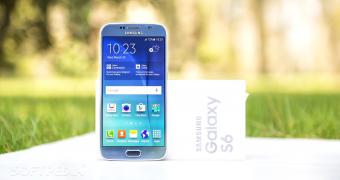
 14 DAY TRIAL //
14 DAY TRIAL // 